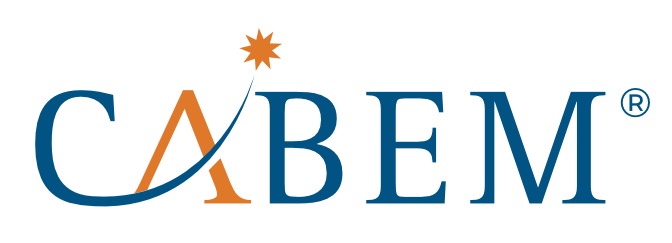The Benefits of an Automated Credentialing Solution
Credentialing plays an important role in the education industry, verifying that educators have the knowledge, skills, and qualifications needed to teach. The credentials needed to be a teacher can vary by field and the age of the students. For teachers, the importance of these credentials can’t be overstated; those with credentials are more likely to get hired and make more money than those without them. While public school teachers are required to hold specific licenses, not all teaching jobs require licensure. Credentials also act as a necessary qualification for other jobs in the education industry, from school administration to district office positions. The education industry is broad and the credentials required vary depending on the position. Let’s take a closer look at credentialing in this important industry, as well as how an organization can leverage an automated competency management program to inspire professional development, track credentials, and mitigate compliance risk.
What Is Credentialing?
Credentialing is a process of evaluating and verifying credentials or qualifications for employment or membership. Credentialing is often used as a means of quality assurance because credentialed professionals are presumed to be more qualified than non-credentialed professionals. Credentials are earned and awarded by completing a course of study, successfully passing an assessment, or meeting specified requirements that verify competency. A person may have one or more types of credentials, such as certificates, certification, licensing, and/or academic degrees.
- Certificates are awarded after successful completion of a brief course of study, usually one year or less but at times longer. Certificates are primarily awarded in public or private two-year institutions of higher education, university extension programs, or non-degree granting postsecondary institutions like area career and technical education schools. A certificate does not require any further action once completing the course of study.
- Certifications indicate mastery of or competency in specific knowledge, skills, or processes that can be measured against a set of accepted standards. These are not tied to a specific educational program but are typically awarded through assessment and validation of skills in cooperation with a business, trade association, or another industry group. After attaining a certification, individuals often must meet ongoing requirements to maintain the currency of the certification.
- A license is a legal permission, often granted by a government agency, to allow an individual to perform certain regulated tasks or occupations. Upon receipt of a license, ongoing requirements may be necessary to maintain the license.
- An academic degree is an award or title awarded to an individual for the completion of a program or courses of study over multiple years at postsecondary education institutions.

Why Is Credentialing Important for Educators?
Every educator has a path that brought them to where they are today. In order for an educator’s career to be long-lasting, it’s important that they are constantly looking for ways to grow and develop professionally. If someone wants to teach, they need to have a degree as well as either an elementary certificate or a teaching certificate from the state board of education. It is also important for teachers to renew their licenses every five years.
Additional credentialing is one-way educators can make themselves more employable and valuable in their field. The process of credentialing can be expensive and time-consuming, but there are lots of benefits. A credentialed teacher not only earns more money than an uncredentialed one (averaging around $2,000 per year), but they also enjoy higher respect among peers and supervisors. The American Association of Colleges for Teacher Education reports that 92% of administrators feel teachers with professional credentials were significantly better at meeting school goals than those without. In addition, 95% of surveyed principals believe that credentialed teachers have stronger skills in literacy instruction. In the education industry, it’s important that you know what credentials you need, where you can find them, and how long they’ll take to complete before you start working.
What are the General Requirements for Teaching Credentials?
All U.S. public school teachers must be licensed. General requirements for teaching credentials include obtaining a Bachelor’s degree and completing a teacher education program. All 50 states, the District of Columbia, and Puerto Rico require teachers to be licensed in order to teach in public schools. However, the specific requirements for teacher certification vary on a state-by-state basis.
The rules for licensure are set by each state’s board of education. Most states require the completion of a standardized test, such as the Praxis Exam, to demonstrate subject competency and mastery of basic skills. Some states require their teachers to have a degree in the subject they wish to teach. Others require teachers to receive certification for each individual subject they teach or even certification for the specific grade they plan on teaching.
Teachers can be licensed in early childhood education, elementary education, middle school, secondary education, or a specific field, such as reading, writing, English as a second language, or special education.
Many states also require teaching experience as a student teacher under the supervision of a licensed teacher, which is often incorporated into a teacher education program. Most states have reciprocity agreements that recognize portions of a teacher’s licensure from other states, allowing educators a greater degree of flexibility in moving from place to place for work.
What are the Benefits of Automated Credentialing?
Credentialing software is a cloud-based system that allows your team to easily manage credentials and CMEs, set notifications for expirations and renewals, and access documentation, all from a centralized platform. By implementing credentialing software, the process becomes automated, relieving you and your team of the ongoing responsibility of searching through old paperwork, trying to contact team members, and the other manual tasks that can be involved with credentialing management.
CABEM” Competency Manager is a competency-based training and credentialing solution that inspires professional development and mitigates compliance risk. It can be used by organizations in the education industry to manage the competency of individuals by tracking credentials, storing documents, sending automated alerts, automating expirations and renewals, and conducting any training or assessments necessary.
Everyone has many tasks that they need to accomplish, and desired skills to be able to do so competently. Our system helps bridge this gap, compiling and creating competencies in a logical way that institutionalized enterprise employee knowledge. We found that many training plans operate within a vacuum and are not formulated from the top down to address the needs of the whole organization. Our system allows organizations in the education industry to track credentials, as well as to create competencies and map them to departments, roles, locations, and other segments across the enterprise. Contact us today to get started.

